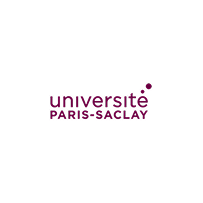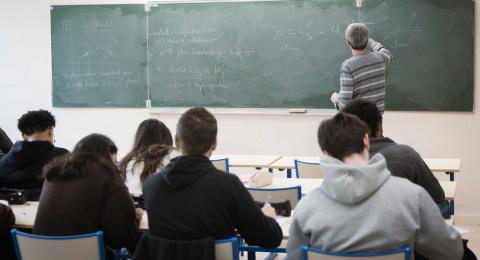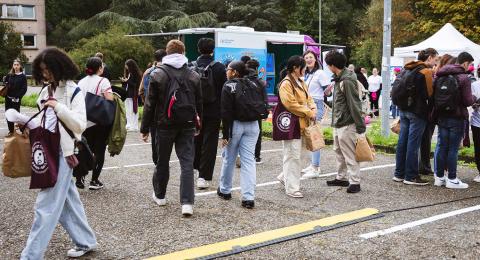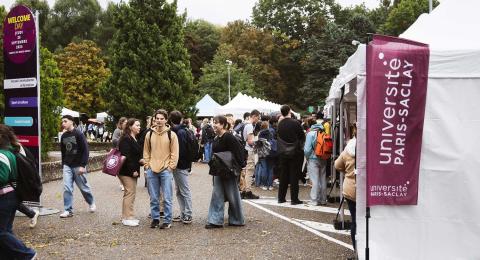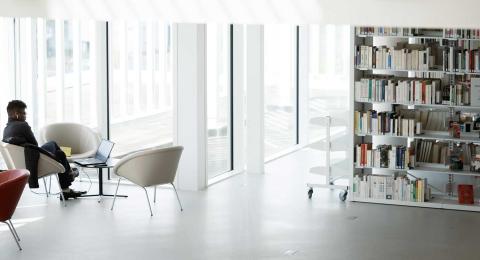The M2 ATSI aims to train students with a coherent program to address academic and industrial topics in the domains of: systems and control, signal & image processing, and statistical learning and related field like machine learning.
The courses focus on methodological foundations and recent developments in these fields, which intervene directly or indirectly in many disciplines such as optics, medicine, robotics, energy, automotive…
The Master's programme is organised into two semesters: the first semester consists of five compulsory teaching units covering topics useful in both automation and signal and image processing, as well as two teaching units chosen from a selection of four. The second semester consists of one compulsory teaching unit, four teaching units chosen from a selection of eight, and a work placement lasting at least four months between April and August.
Information
Objectives
The objective of this curriculum is to train students to address academic and industrial research topics of a high scientific level in the domains of systems and control, signal and image processing. The courses focus on methodological foundations and recent developments in these fields, which intervene directly or indirectly in many disciplines such as optics, medicine, robotics, energy, automotive... The curriculum also trains student to research work through dedicated teaching initiatives (seminars, bibliographic work, project, etc.) and a strong involvement of the associated research laboratories.Students who follow this curriculum will have job opportunities in academic research as well as in industry. They will be able to pursue research training in the form of doctoral studies in academic or industrial environments (CIFRE thesis). They also will be able to work immediately as research engineer within industry R & D teams and specialized laboratories with needs in the areas of automation and control systems, signal and image processing or data science.This program has a dual objective: to prepare students for their doctorate and to provide them with the necessary elements to help them advance new areas of scientific research. The curriculum covers the main scientific themes that concern university laboratories and industrial companies dealing with automatic control and signal processing. It teaches the basics of methodology and recent theoretical or applied developments. These developments, which are in constant evolution, directly or indirectly intervene in numerous disciplines such as optical, electronics, statistics, economics, medicine, robotics, energy, etc.
Career Opportunities
Career prospects
Après Master + Doctorat : chercheur ou enseignant-chercheur
Après un Master ou Master + Doctorat : ingénieur (R&D, contrôle, production…)
Après un Master ou Master + Doctorat : ingénieur (recherche et développement, contrôle, production…)
Further Study Opportunities
Doctorat
Fees and scholarships
The amounts may vary depending on the programme and your personal circumstances.
Admission Route
Capacity
Available Places
Target Audience and Entry Requirements
The Automatic and Signal and Image Processing (ATSI) study path is part of Université Paris-Saclay's E3A programme. This study path is also open to students beginning their second year, particularly those on dual courses with engineering schools (CentraleSupélec, IOGS), or students from other national or international courses. It is thus aimed at students with a solid grounding in engineering, who demonstrate particularly good command and understanding of the theoretical aspects. It is also open to mathematics and possibly computer science students who are especially inclined towards the subject.
Application Period(s)
From 01/02/2026 to 20/07/2026
Supporting documents
Compulsory supporting documents
Motivation letter.
All transcripts of the years / semesters validated since the high school diploma at the date of application.
Curriculum Vitae.
Additional supporting documents
Rank of previous year and size of the promotion.
Certificate of French (compulsory for non-French speakers).
VAP file (obligatory for all persons requesting a valuation of the assets to enter the diploma).
Supporting documents :
- Residence permit stating the country of residence of the first country
- Or receipt of request stating the country of first asylum
- Or document from the UNHCR granting refugee status
- Or receipt of refugee status request delivered in France
- Or residence permit stating the refugee status delivered in France
- Or document stating subsidiary protection in France or abroad
- Or document stating temporary protection in France or abroad.

